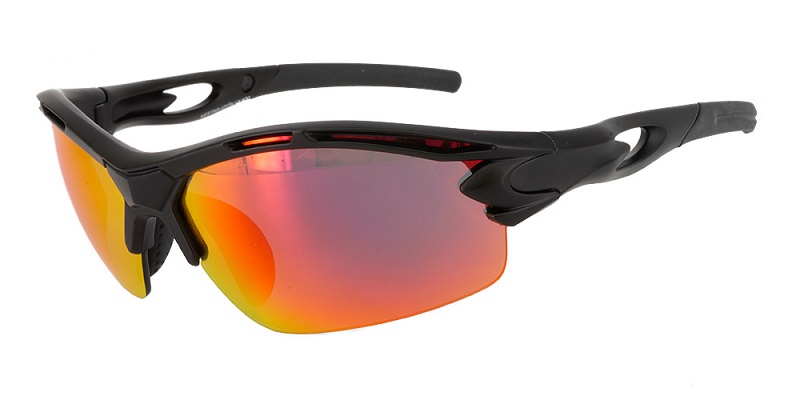Types of Lenses used for creating Prescription Safety Glasses


There are various material used to create Prescription Safety Glasses, but it is essential to know which ones are best suited to you. In the following blog, we have discussed the most commonly used lenses for safety eyewear.
1.?Polycarbonate lens
Polycarbonate was first developed in 1970s for aerospace applications and is still in use for helmet glass of astronauts and space shuttle windshields. Now you can imagine how strong are the polycarbonate lens! Later, in 1980 when there was a demand for lightweight and impact-resistant eyeglasses, polycarbonate lenses were first used in making eyewear.
Since then the craze for polycarbonate lenses haven't slowed down. It is one of the most preferred glasses for making safety eyewear, children's eyewear and sports goggles.
Polycarbonate is one the primary choice for making?Prescription Safety Glasses. They are thinner and lighter to wear day long. Additionally, the lenses provide 100% UV protection and are ten times more impact ? resistant compared to other lenses.
Other conventional plastics are made using a cast moulding process, where a plastic material is baked for a long duration in the form of lens, to solidify the liquid plastic to build a lens. Whereas, polycarbonate is made using thermoplastic process, in which small plastic pellets are heated until they melt. Then the molten polycarbonate is injected in the lens mould, it is then compressed under high pressure and then cooled to form the shape of lens, which is a final process.
The polycarbonate lens conforms to OSHA safety and quality standards. So, we highly recommend this lens for safety glasses for the usage during work and other sports activity.
-
Thickness - Polycarbonate has a high index of refraction -1.58 that makes it quite thinner than other lenses.
-
Scratch Resistant- Polycarbonate lenses have a built-in scratch-resistance coating, which makes it a good option for rough use.
-
Weight- Polycarbonate lenses are light in weight.
-
Optical clarity - Polycarbonate lenses provide a clear vision to the wearer with causing discomfort.
-
Impact Resistant ? Polycarbonate lenses are highly impact-resistant; they can survive the impact of steel ball travelling at 160 kilometres per hour without breaking.
-
UV Protection- Safety glasses made of polycarbonate lenses block 100% UV rays, providing safety to eyes against harmful rays, which cause eye problems like melanoma, skin cancer in and around eyelids and cataracts.?
2. Trivex lens-
Trivex lenses came into light in 2001 for the military use, as a "transparent armour". Clearer, powerful and lighter, Trivex was adopted for eyewear use in 2002. It swiftly replaced the other materials used for prescription safety glasses. Like polycarbonate lens, lenses that are made of Trivex are thin, light in weight and provides higher impact-resistance than plastic or glass lenses.
Trivex lenses are consist of a urethane-based monomer, and are made using a cast moulding process, in a similar way how regular plastic is created. This allows the glasses to have sharp optics than inject moulded polycarbonate lenses.?
-
Thickness- Trivex lenses have a refraction index of 1.53 which makes it thinner and impact resistant
-
Weight- Trivex?s low specific gravity feature makes it lighter
-
Optical clarity- Trivex lens have less internal stress that enables a sharp and crisp vision
-
Impact Resistant- Trivex lenses have a high tensile strength that makes it highly durable and light in weight. This is an essential feature as this lens is mounted on minimalists- rimless frames as well as on safety eyewear.
-
UV Protection- The lens provides 100% protection to eyes from harmful UV rays
-
Availability- Trivex lens is widely used in regular as well as Prescription Safety Glasses because they are light in weight and can be mounted on sleek and fashionable frames.
-
Cost- The cost of Trivex lens is slightly higher than the polycarbonate lens.?
3. Plastic lens
While most eye care practitioners prefer Trivex lenses for rimless glasses and safety eyewear, most customers look for better alternative price-wise. A plastic lens is an ideal cheaper alternative of Trivex. It is durable and clear and less expensive than other lenses used for safety eyewear.
Features-
-
Weight-CR39 plastic is light in weight
-
Optical Clarity- It provides good vision even for higher prescriptions
-
Suitability- It is ideal for the work environment where chemical and painting is involved
-
Scratch-resistant- Plastic lenses are coated with starch-resistance paint
-
Thickness- The middle of the lens is thicker, which provide tensile strength to the overall glass.
-
Anti-Reflective ? The plastic lenses are coated with anti-reflective coating which makes it extremely anti ?reflective.?
It is always advisable to consult an eye doctor before choosing the right lens for safety eyewear.
CA Glasses?is the top manufacturers of?Prescription Safety Glasses. We provide a one-stop solution for all eye protection concerns. You can find a wide variety of latest and popular safety eyewear options in Rx?Safety?section.
Get your pair now!











